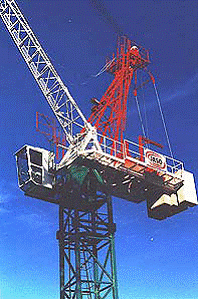
Report
Subject: HSE Release Report - Major Accident Lifting Jib Liverpool January 2007 Date of Email report: Mon 04/08/2008 Report Detail: Please find attached details of a HSE report released today associated with a Major Accident with a Luffing Jib Tower Crane Collapse in Liverpool City Centre January 2007. Although this type of crane is not often perhaps used in our operations other than during heavy construction, the HSE have requested all crane operators to address some concerns which you should ensure the appropriate technical authority is aware of at your assets. This comes on the back of a number of serious crane incidents in the US this last year, the most recent at an Oil Refinery in TXC circulated previously. As a result of the incident one worker was tragically killed and the driver of the crane was seriously injured. Principal contractors and crane operators should ensure that cranes are erected, operated, maintained and dismantled in accordance with the advice in the HSE safety alert issued on 17 October 2006. Update on HSE investigation - August 2008 HSE has also sent to these companies and its other key stakeholders a copy of an HSE technical report which sets out the most likely explanation for the collapse. HSE Actions Required (specific to Operator) 1. It would appear that better protective devices to prevent luffing ropes from coming off their pulleys would significantly reduce the potential for further events, particularly where wind and operating conditions provide potential for slack rope conditions to arise. And alternative or additional precautions may also be required. 2. To stimulate discussion and encourage preventive activity HSE has decided to share the findings of its investigation with to interested parties by sending this report to them. We expect those parties who have control over the design and integrity of luffing cranes to examine their designs and existing machines and:
3 HSE will raise with EU colleagues and, if necessary, the European Commission our concerns about EN 14339:2006 and the design of luffing 4. HSE will hold talks with the Construction Plant Hire Association (CPA) and other relevant trade associations to stimulate them to raise awareness in the crane hire and user communities and to consider the need for the production of guidance on measures which can be taken to mitigate recurrence including:
5. HSE will also discuss the incident with the independent examination body community, via SAFED and INITA, so that competent persons conducting thorough examinations in accordance with LOLER can assess the effectiveness of precautions to prevent ropes coming off their pulleys. Additional Documentation: |

